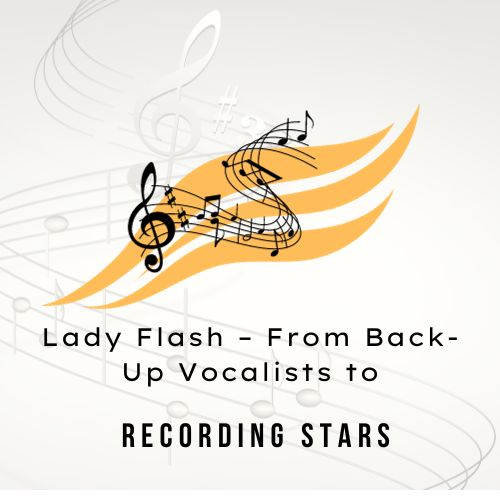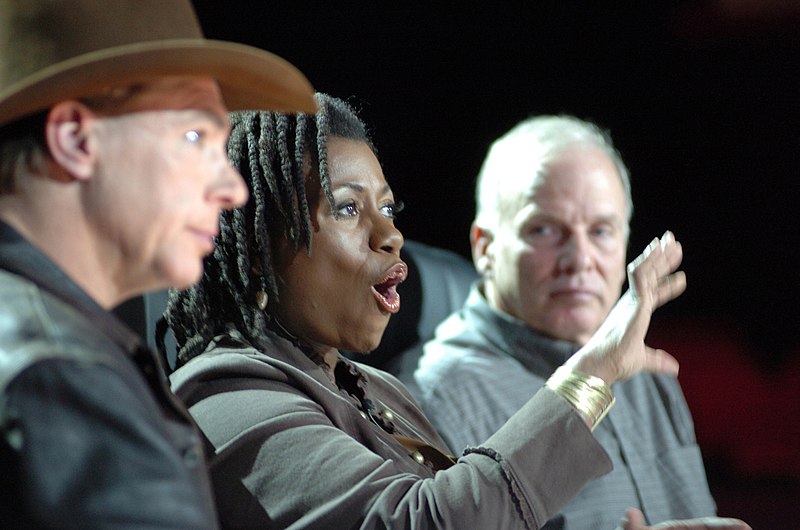Introduction to Lady Flash
The vocal trio, called Lady Flash, were created as a backing group for Barry Manilow in the mid-to-late 1970s. When they were formed, they were first known as the Flashy Ladies and paraded with a lineup that consisted of Reparata Mazzola, Debra Byrd and Ramona Brooks; Brooks was then replaced by Monica Page who had been a member since. They came out with their own hit, the Manilow-penned “Street Singin’” in 1976. Since the trio’s inception they had been backing vocalists for Manilow in his first seven albums, all of which went to platinum.
Lady Flash’s Early Years
Best remembered as Barry Manilow’s backup vocalists and for their own recording career in the 70s music scene, Lady Flash was a trio consisted of Lorraine Mazzola, Debra Byrd and Ramona Brooks. Mazzola displayed a talent for singing while she was young; she became one of the members of Brooklyn College Chorus and the teenage group Reparata and the Dolrons. In 1968, she also became a solo artist and released the single “Captain of Your Ship” which was made on the U.K. Singles chart at #13. With the single’s success, she embarked on a tour in England in the same year.
Byrd used to sing in a gospel group Community Voices of Faith Choir. She attended Kent State University where she studied music theory. Later, she became the musical director of the Black Theater Workshop and recorded with the gospel group Jean Austin Singers. After that, Byrd was signed to Columbia Records and became one the Interpreters, switching to secular music. Brooks, meanwihile, was already performing at nightclubs as a soloist.
The birth of Lady Flash with their lone hit “Street Singin'”
Mazzola, Byrd and Brooks were initially gathered by Barry Manilow who was about on his way to stardom. Mazzola was the first recruit of Manilow, followed by Byrd and Brooks who were selected in an audition. At first, they were collectively named as Flashy Ladies for they were always covered with glittery ensemble. Subsequently, Brooks left the group in 1976 and pursued her solo career, and her slot was later taken over by Monica Page. Page had been in the group all throughout the trio’s career.
Since the trio had been with Manilow in his engagements, he helped them to get signed to RSO imprint as a payback. At that point, they called themselves Lady Flash. In the summer of 1976, Manilow produced their debut album Beauties in the Night which contained the single “Street Singin.” Written by Manilow, the single entered the Top 30 on the Billboard Hot 100, peaking at #27. “Street Singin’” was also Lady Flash’s only hit. After their own success, they continued to work with Manilow. The following year, Burruss left the group and was replaced by Muffy Hendricks. Manilow, having less tour engagements by that point, Lady Flash slowly drifted as well.
Rise to fame
As a female vocal trio in the 1970s, Lady Flash became well-known. They first made headlines as backup singers, showing their potent harmonies and vivacious stage presence. As they gained popularity, Lady Flash acquired a record deal and put out their debut track, which was an instant hit. Their self-titled debut album, which further cemented their status as recording artists in their own right, was made possible by the success of their first single.
Lady Flash went on to create a number of further albums, each of which increased their level of popularity. Their music was praised for its upbeat spirit and encouraging message. The trio was recognized for its intense live performances, which contributed to their long traveling schedule. With time, Lady Flash rose to prominence as one of the most adored female vocal ensembles of their generation, and their work is still highly regarded by listeners all over the world.
Music Styles
The sound of Lady Flash was well renowned for blending many musical genres. They used elements of R&B, soul, and pop to produce a distinctive sound that was both upbeat and dynamic. Strong harmonies, an engaging stage presence, and a positive message made their music stand out.
Lady Flash’s musical arrangements frequently incorporated funk, disco, and soul components to produce a sound that was both danceable and emotionally resonant. Also, they added jazz, blues, and rock elements into their music, resulting in a complex and varied musical style that drew from a variety of inspirations.
The group’s ability to incorporate a variety of musical genres into their sound helped to solidify their position as one of the most avant-garde and dynamic vocal groups of their generation. Lady Flash’s music was recognized for its high energy and powerful harmonies.
Live Performances
The dynamic stage presence and powerful harmonies of Lady Flash made them one of the top live acts of their day and a favorite with audiences all around the world. Live performances by the duo were known for their vigor, excitement, and capacity to captivate crowds and get them up dancing.
Intricate musical compositions, extravagant stage designs, and elaborate choreography were frequent features of Lady Flash’s live performances. The group worked hard to make sure that each show was a special and unforgettable experience for its fans. Their live performances were centered around the trio’s strong harmonies and dynamic stage presence.
Lady Flash was renowned for their crowd engagement in addition to their energizing shows. Each presentation seemed like an unique occasion due to their frequent interactions with the audience, which included story-telling and the sharing of personal anecdotes.
Life after Lady Flash
After Lady Flash’s short-lived success and fame, the trio went on their separate ways. Mazzola pursued her acting career and appeared in the movie Dark Before Dawn. She had also written a best-selling book Mafia Kingpin and now works as a screenwriter.
Byrd decided to stay in the music field, backing up for the Eurythmics and Bob Dylan. She is currently a vocal coach on American Idol.
Burruss, on the other hand, had recently performed once again with Manilow from 2004-2010.
Conclusion
Lady Flash’s progression from support singers to recording artists is evidence of their talent, passion, and dedication to their work. The trio became one of the most adored female vocal groups of their generation thanks to their potent harmonies, engaging stage presence, and avant-garde musical taste. Fans from all around the world continue to appreciate their music, which is recognized as some of the most influential and thrilling music of the 1970s and 1980s.


